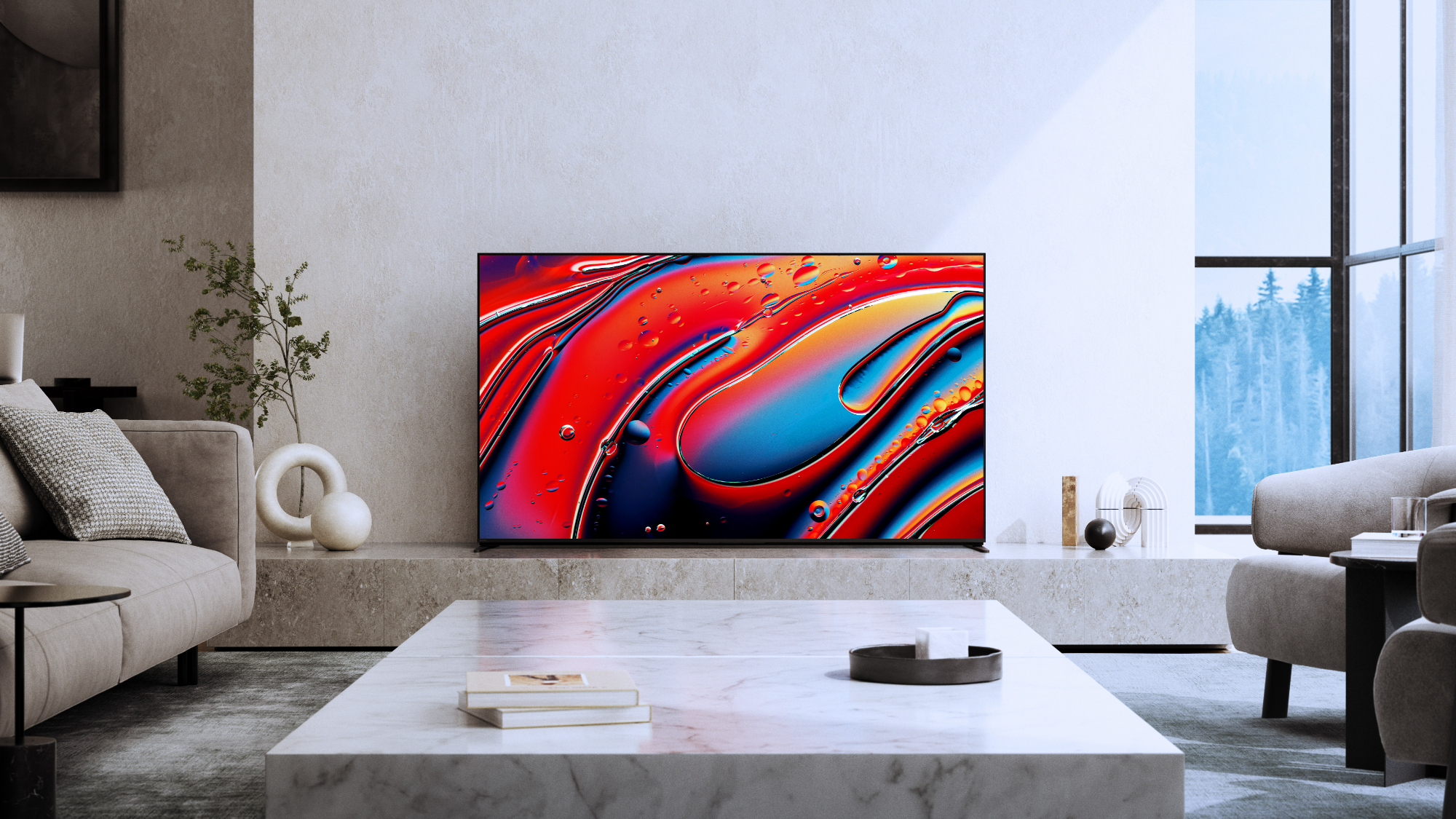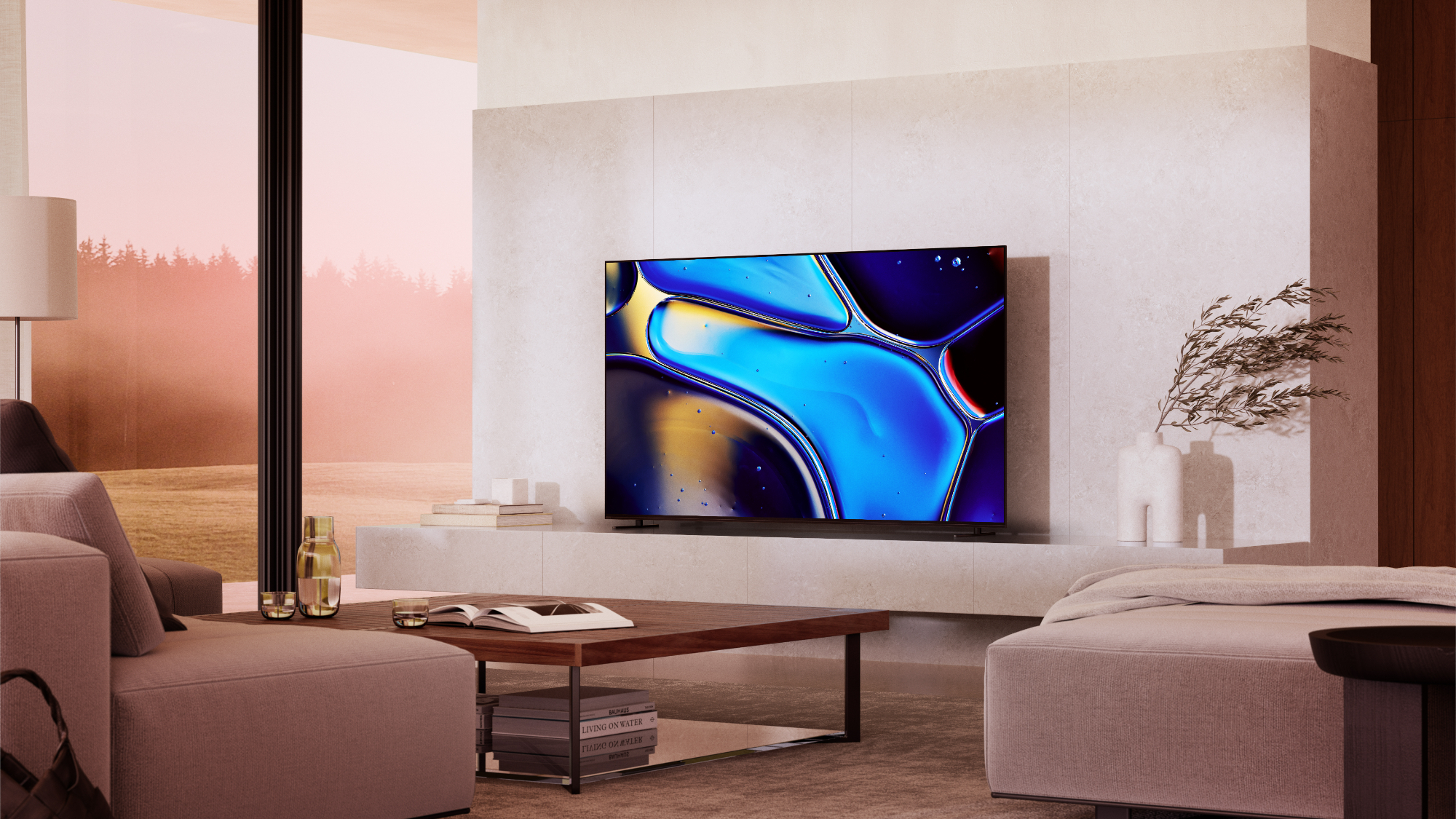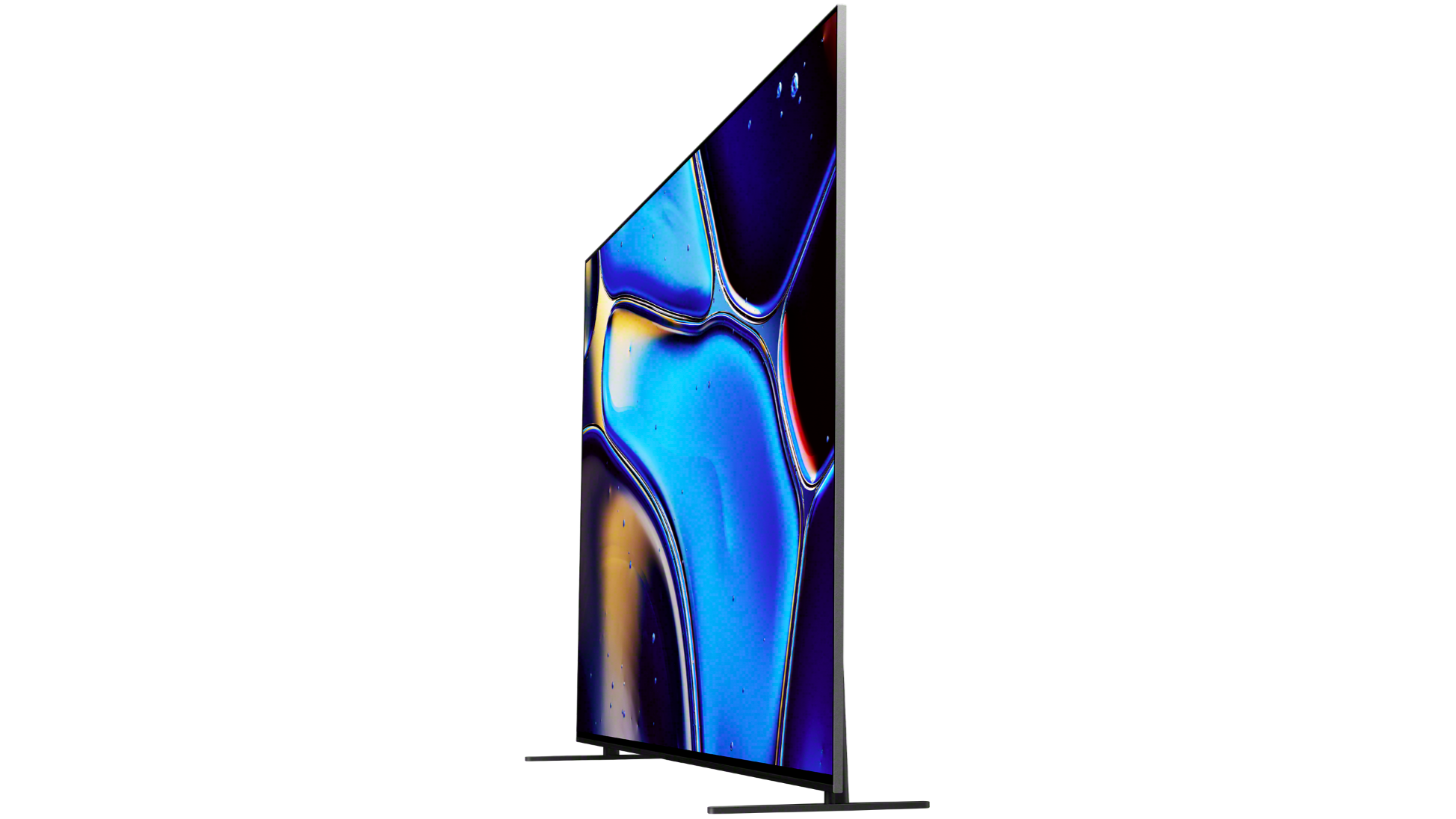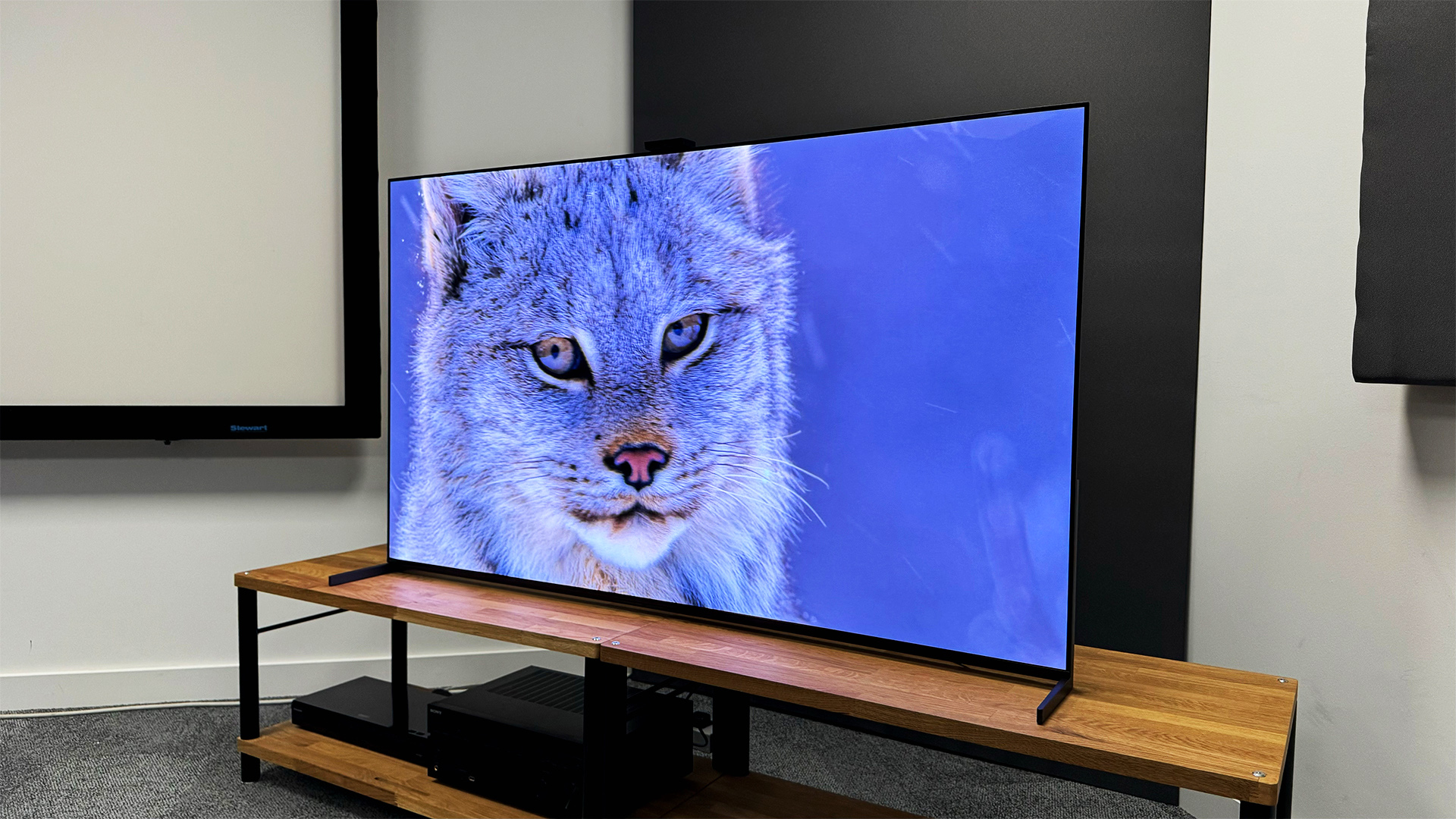Sony unveils new 2024 TV range, and its flagship isn't an OLED
Update: US pricing and availability revealed, and a surprise fourth Bravia TV makes an appearance

UPDATE 18/04/2024: We now have pricing and availability information for the US which we have added throughout. We're still awaiting pricing information for Australia, however, we will update this page once again when we receive that.
We can also confirm that a fourth model titled the Bravia 3 will launch as part of this range in the US and Australia but not in the UK. It appears to be an entry-level model that doesn't feature a Mini LED backlight or the XR Processor as seen on the other sets in this lineup, instead using Sony's 4K HDR Processor X1 chipset.
ORIGINAL STORY 17/04/2024: After a practically flawless streak of five-star TV releases last year and an abstract CES 2024 show that focused on a concept electric vehicle and a mixed-reality headset, we've been anxiously awaiting word on Sony's new TVs for 2024. Thankfully that wait is now over, as Sony has officially lifted the lid on its upcoming trio of TVs for this year.
For 2024, Sony is renewing the Bravia moniker and putting it front and centre in the model names of these new sets. The new models are called the Bravia 7, Bravia 8 and Bravia 9, and they're packed with intriguing updates all around.
Sony's message for this new range is that it wants to "bring the cinema home". It's leveraging its expertise and deep integration within the film industry to build these TVs to best reflect the creator's intent. It's a clever idea, especially considering that Sony develops the cameras many film studios use, as well as some of the most popular mastering monitors that are used to edit and colour-grade films, and it owns the Sony Pictures film studio too, of course. Therefore (theoretically) it makes sense for Sony to position its TVs as the final step in the process from creating to consuming film content.
Not only is Sony leveraging its internal content partners in Hollywood studios, but it's also reinforcing partnerships with the likes of Dolby Atmos and Vision, Netflix and Amazon Prime Video to enhance synergy between its TVs and those technologies and platforms. Now we've got the background information covered, let's dig into the new Bravia TV range.
Bravia 9 QLED

From the new range, the flagship model that's caught our eye isn't a QD-OLED, nor is it an OLED TV at all for that matter. Instead, Sony is opting to use its newly developed and mighty impressive-looking Mini LED-based backlighting system in the Bravia 9. We got a brief look at the raw tech back in November of last year during a trip to Sony's headquarters in Tokyo, and can now officially confirm that it will power the upcoming Bravia 9 TV.
The latest hi-fi, home cinema and tech news, reviews, buying advice and deals, direct to your inbox.
Sony has drawn comparisons to its X95L flagship Mini LED from last year (which the Bravia 9 will be replacing), claiming that this new model is 50 per cent brighter and features over three times the number of dimming zones too. Most interestingly, Sony is claiming "OLED level blacks" on this TV, which is a very bold claim for a backlit TV, and one that we examine in more detail in our Sony Bravia 9 hands-on.
This enhancement in brightness and black depths is attributed to the company's new XR Master Backlight Drive system, which is broken into three components: the processor, LED driver and the Micro LEDs. According to Sony, the more precise backlighting system will allow for pinpoint accuracy when it comes to localised dimming zones, resulting in deeper blacks and less chance of brighter subjects on dark backgrounds creating a halo effect. This is where Sony's expertise with top Hollywood display tech comes into play, as it claims the backlighting control in the Bravia 9 is akin to what you'd find in one of its professional monitors.
The updated XR Processor also plays a key role in this, with enhanced picture recognition features that will improve the look of faces and foliage. Sony claims that this facial recognition feature will work on front and side views of faces and even animated faces, resulting in sharper and more defined features. Sony is also incorporating deeper integration with its content partners with these new models by including a picture calibration system based on the service you're using. This will use picture calibration data stored in the cloud to automatically adjust your TV's settings when streaming content from Netflix, Amazon Prime Video or Sony Pictures Core.

However, it appears that Sony will continue to use the MediaTek Pentonic 1000 chipset, as the Bravia 9 will only feature two HDMI 2.1 sockets, which will support 4K/120Hz gaming with VRR and ALLM. These HDMI 2.1 sockets are also expected to support Dolby Vision up to 120Hz, however, unlike Samsung and LG's latest sets, they will not support 144Hz gaming. One of these connectors will also serve as an eARC port for connecting an AVR, or even one of Sony's new Bravia Theatre Bar Dolby Atmos soundbars.
On the subject of audio, Sony is also debuting its LED Acoustic Multi-Audio+ system on the Bravia 9, which will feature a 70W 2.2.2 channel audio system. This incorporates two front-facing 10W midrange drivers, two 5W frame tweeters (which are mounted within the side of the frame of the TV), two 10W upward firing beam tweeters and dual 10W subwoofers, with each pair of speakers all featuring individual amplifiers providing the power. Sony claims that this sound system delivers an enlarged surround sound effect while retaining clearer and more precise sound positioning.
The Bravia 9 will come in 65-, 75- and 85 inches, however, the smallest size strangely isn't coming to the UK. Pricing for the Bravia 9 is as follows:
| Row 0 - Cell 0 | UK | US | Australia |
| 65in | No such model | $3300 | To be announced |
| 75in | £4499 | $4000 | To be announced |
| 85in | £4999 | $5500 | To be announced |
Bravia 8 OLED

The Bravia 8 is the only new 2024 OLED model from Sony, and it's replacing a very notable TV from 2023. It is taking the place of the Product of the Year Award-winning A80L, a TV that swiftly became a benchmark for testing OLED sets in our TV and AV testing room last year, so a lot is riding on this new model.
Sony hasn't gone into much detail on this new set compared to the abundance of information about the new Bravia 9 Mini LED TV, but we have already seen it in action – you can read all about it in our Sony Bravia 8 hands-on.
We can confirm that it uses the latest WOLED panel from LG Display (not QD-OLED or Micro Lens Array) and it reportedly has a 10 per cent higher peak brightness than the A80L.
Sony is using its OLED Acoustic Surface Audio+ sound system which uses actuators to vibrate the panel to create sound. This results in a more convincing centralised "sound from the screen" effect over Sony's previous OLED TV models, so we have no reason to doubt that the Bravia 8 will sound at least as good. Sony hasn't shared much in the way of sound system information for this TV, although from what we can see it doesn't include the new beam tweeters found on the Bravia 9.

Speaking of the Bravia 9, there appear to be plenty of features from that set coming to the Bravia 8, including the pair of HDMI 2.1 sockets, the upgraded XR Processor, and the creator calibration picture settings.
There's no doubt that the Bravia 8 has big shoes to fill, and we're thoroughly looking forward to seeing whether it lives up to the high expectations set by its predecessor.
It's set to come in three size options – 55-, 65- and 77-inches and is available to pre-order in select European markets and the US. Pricing is as follows:
| Row 0 - Cell 0 | UK | US | Australia |
| 55in | £2199 | $2000 | To be announced |
| 65in | £2699 | $2800 | To be announced |
| 77in | £3999 | $3900 | To be announced |
Bravia 7 QLED

Considered by Sony as the spiritual successor to the X90L (despite that model continuing into 2024 – more on that in a moment), the Bravia 7 QLED TV completes the trifecta of new models. It's using a less advanced backlighting system compared to the Bravia 9, however, it moves up from a full array local dimming backlight on the X90L to a Mini LED system this year.
This upgrade in backlighting tech means that the Bravia 7 will reportedly be 30 per cent brighter than the X90L, as well as featuring eight times more dimming zones. Paired with the enhanced XR Processor and slightly less powerful Acoustic Multi Audio system that forgoes the upward-firing beam tweeters.
It retains the same gaming specs as its higher-end Bravia siblings, with dual HDMI 2.1 sockets and support for VRR, ALLM and Dolby Vision up to 120Hz.
The Bravia 7 is available to pre-order now in select European markets and the US in four sizes: 55-, 65-, 75- and 85-inches, with the following prices for each size:
| Row 0 - Cell 0 | UK | US | Australia |
| 55in | £1899 | $1900 | To be announced |
| 65in | £2199 | $2300 | To be announced |
| 77in | £2799 | $2800 | To be announced |
| 85in | £3499 | $3500 | To be announced |
Continuing models

Sony will continue to sell a selection of its existing models throughout 2024 alongside the new Bravia models. The confirmed list of models includes the flagship QD-OLED A95L and A90K OLED TVs, as well as the LED backlit X80L, X85L and X90L models.
We're relieved to see the A95L stick around as it was easily one of the best TVs to release in 2023. Sony attributes its continuation to the fact that it arrived quite late in the year, meaning it wouldn't make sense to replace it so early into its lifespan.
Interestingly, Sony will continue to sell the A90K, its compact OLED TV that comes in 42- or 48-inches, despite it launching back in 2022. With that model coming up on two years old, we were anticipating a refreshed sub-50-inch OLED TV in Sony's new lineup; alas this has not been the case, as the A90K lives to fight another year. Thankfully, the A90K is still an excellent compact OLED TV, although we'd still recommend the 42-inch or 48-inch LG C3 if you're a serious gamer.
A new remote and Eco-friendly updates

Sony is making a big deal about its environmental impact when it comes to the new Bravia TV range. It's announced a host of eco-friendly improvements, including the reduction of virgin plastic in favour of its recycled SORPLAS material that's featured on many of its previous TV and AV products. According to Sony, roughly 65 per cent of plastic used in the TVs will be recycled, including the back panel which is the largest plastic component in these TVs.
It's also updating its backlit smart remote to be more eco-conscious. The updated Eco Remote (pictured above) is now made of approximately 79.9 per cent recycled plastic according to Sony, and it sports an eye-catching green and blue speckled design to reflect this. Sony has also switched to a rechargeable internal battery, which can be charged via USB-C (a cable will be included in the box), much like Samsung's SolarCell remote but without the solar panel.
Eco-friendliness is also baked into Sony's software, especially so on the Bravia 9 and 7. Both models use "Sony's proprietary signal processing to maximise the characteristics of the panel device, automatically optimising brightness for each scene while achieving both high brightness and low power consumption." Furthermore, the Eco Dashboard feature has been updated to include information regarding power consumption metrics and tips on how to reduce energy usage.
MORE:
Here are our Sony Bravia 9 and Bravia 8 hands-on reports
This is everything you need to know about Sony's new Mini LED backlighting tech
And here are our picks for the best TVs you can currently buy
Lewis Empson is a Senior Staff Writer on What Hi-Fi?. He was previously Gaming and Digital editor for Cardiff University's 'Quench Magazine', Lewis graduated in 2021 and has since worked on a selection of lifestyle magazines and regional newspapers. Outside of work, he enjoys gaming, gigs and regular cinema trips.
